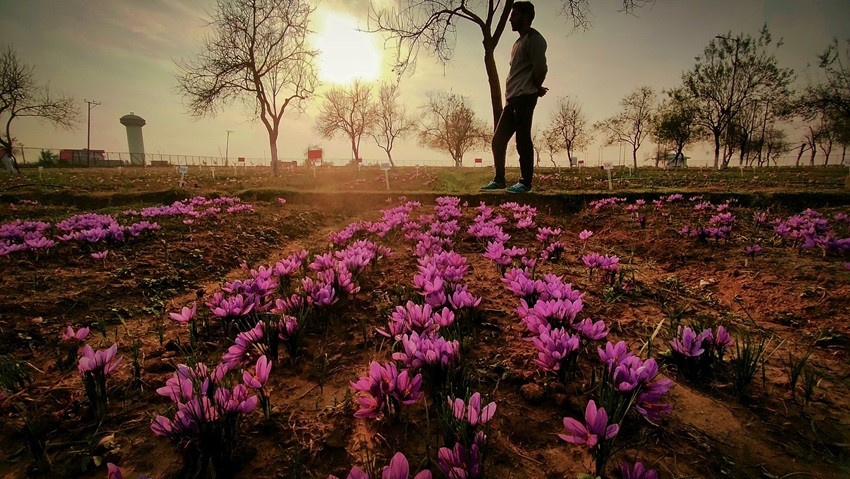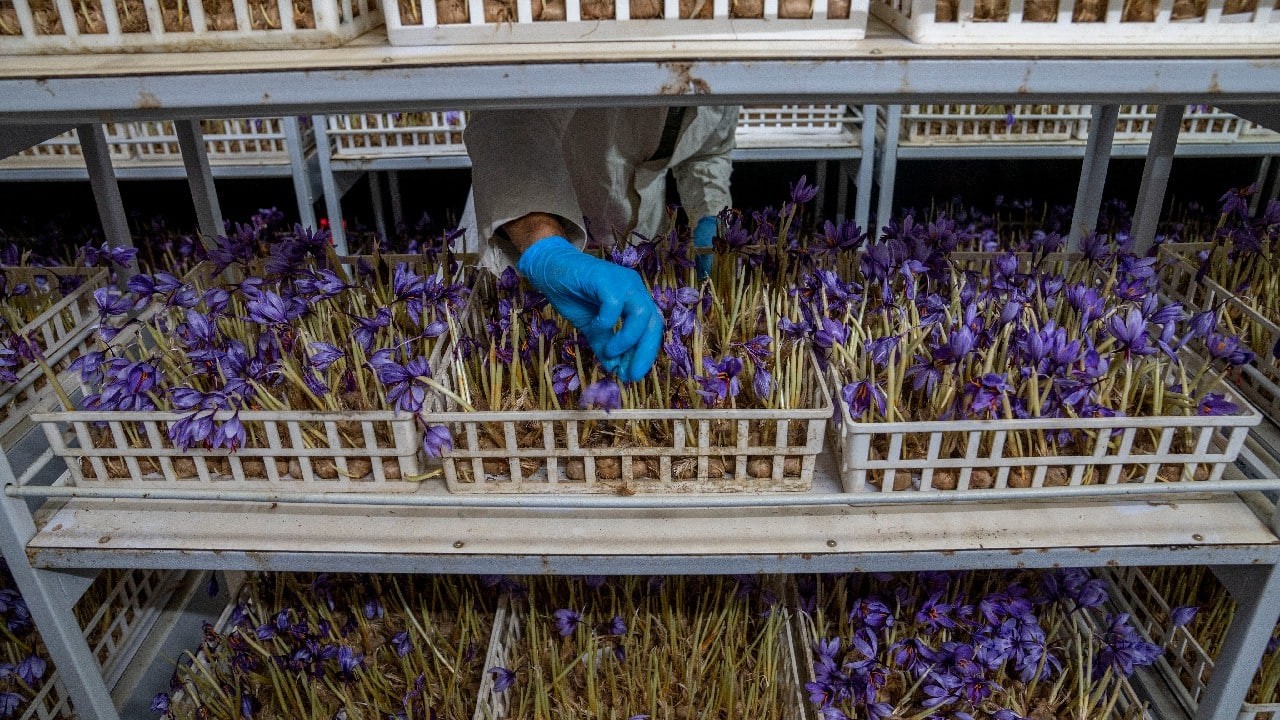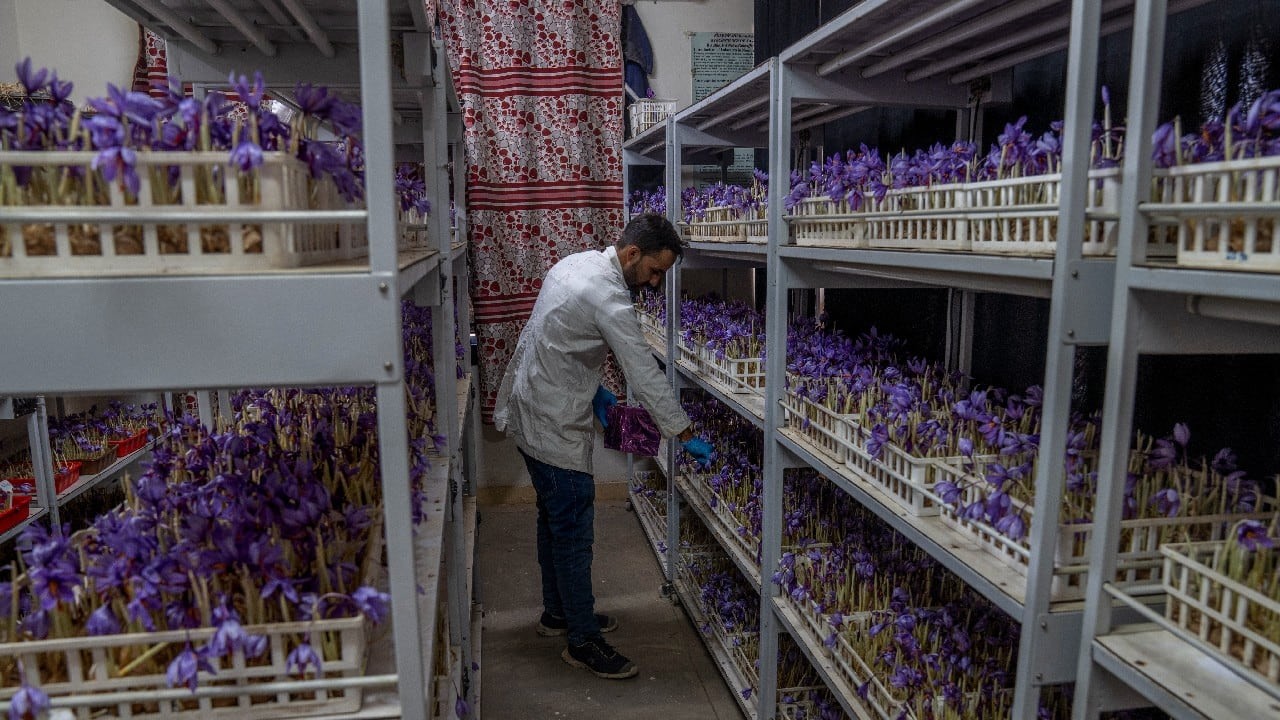Saffron, also popularly known as ‘red gold’, has always held a strong place in Kashmir’s economy and culture. For years, farmers in the region have cultivated this prized spice on the famous Karewa plateaus, relying on its unique ecological conditions. However, this treasured crop is now under serious threat. Climate change has disrupted the delicate balance saffron requires to thrive. As a result, farmers are now forced to either adapt to indoor farming methods or risk watching their livelihoods wither.

The Climate Crisis Hits Kashmir’s Fields
Over the past two decades, Kashmir has witnessed a sharp decline (more than 67%) in saffron production. According to data from the Agricultural Department, the area used for saffron cultivation dropped from 5,707 hectares in 1996–97 to 2,387.71 hectares by 2018–19. Likewise, saffron production has also declined sharply, from 15.95 metric tonnes in the 1990s to only 2.6 metric tonnes in 2023–24.
Unpredictable weather patterns, rising temperatures, prolonged dry spells, and erratic rainfall have significantly affected corm sprouting and flowering cycles.
The bloom period, which once coincided with Kashmir’s crisp autumn, now often arrives late or sparsely. In July 2024, Kashmir recorded its highest temperature in 25 years (35.6°C), which is a worrying milestone for a crop that depends on cool weather and steady moisture.
To make matters worse, snowfall, which is crucial for replenishing the soil’s water table, has diminished. In addition, intense rain events have also started triggering soil erosion. Traditional saffron cultivation, entirely dependent on nature’s rhythm, is becoming increasingly unsustainable. From a peak of 15–17 tonnes in the 1990s, saffron output has plunged to just 2.6 metric tonnes in 2023–24.
Indoor Saffron Farming: A Response To Climate Change
Faced with the stark realities of climate change, Kashmiri farmers and researchers are now turning indoors, literally. Techniques like aeroponics and vertical farming are revolutionising saffron cultivation by reducing the dependence on external conditions, such as the weather.
In aeroponics, saffron corms are suspended in air and misted with nutrient-rich solutions. On the other hand, vertical farming systems enables the farmers to stack their farming systems in multiple layers. Such a system helps the farmers to optimise their space and create highly controlled environments. Temperature, humidity, and light – all these can now be adjusted with precision leading to optimum results.

Indoor saffron farming allows for year-round cultivation, drastically reduces water usage (by up to 90-95% compared to traditional farming), and minimises the need for harmful pesticides or fertilisers. These benefits make indoor saffron farming both climate-resilient and resource-efficient.
Aligning Saffron Farming with Global Sustainability Goals
Interestingly, the changes underway in Kashmir align well with the European Union’s Green Deal, which is a comprehensive blueprint for sustainable agriculture. The EU’s “Farm to Fork” strategy aims to reduce pesticide use, lower water consumption, and promote organic farming. Thankfully, these objectives that indoor saffron farming naturally supports.
By lowering environmental impact and improving yield consistency, indoor farming could help Kashmiri saffron access international markets that increasingly prioritise sustainability and traceability.

Challenges Remain; But So Do Opportunities
Adoption, however, comes with challenges. Indoor saffron farming is still in its experimentation phase and requires significant investment in infrastructure, technology, and training. Energy consumption is another concern, as maintaining optimal growing conditions demands heating, cooling, and artificial lighting.
Consumer perception is also evolving slowly. Will buyers view indoor-grown saffron as authentic and of the same high quality as field-grown varieties?
There was a time when saffron fields stretched widely across Pulwama district. Today, most of Kashmir’s saffron cultivation is limited to Pampore, a region now under pressure from rapid urbanisation, as noted by the Indian Council of Scientific & Industrial Research (CSIR).
Furthermore, many farmers are shifting to higher-yield crops like apples and walnuts. Adding to this, the ongoing regional conflict continues to impact the production and export of Kashmir’s ‘red gold’.
Yet, the opportunities are just as strong. With support from government policies, research institutions, and global sustainability frameworks, indoor saffron farming could redefine the future of Kashmir’s spice economy. While indoor saffron farming is still in its early stages, efforts like the National Saffron Mission, which aims to support and advance saffron cultivation, and continued research at Sher-e-Kashmir University of Agricultural Sciences are steadily laying the foundation for long-term change.
